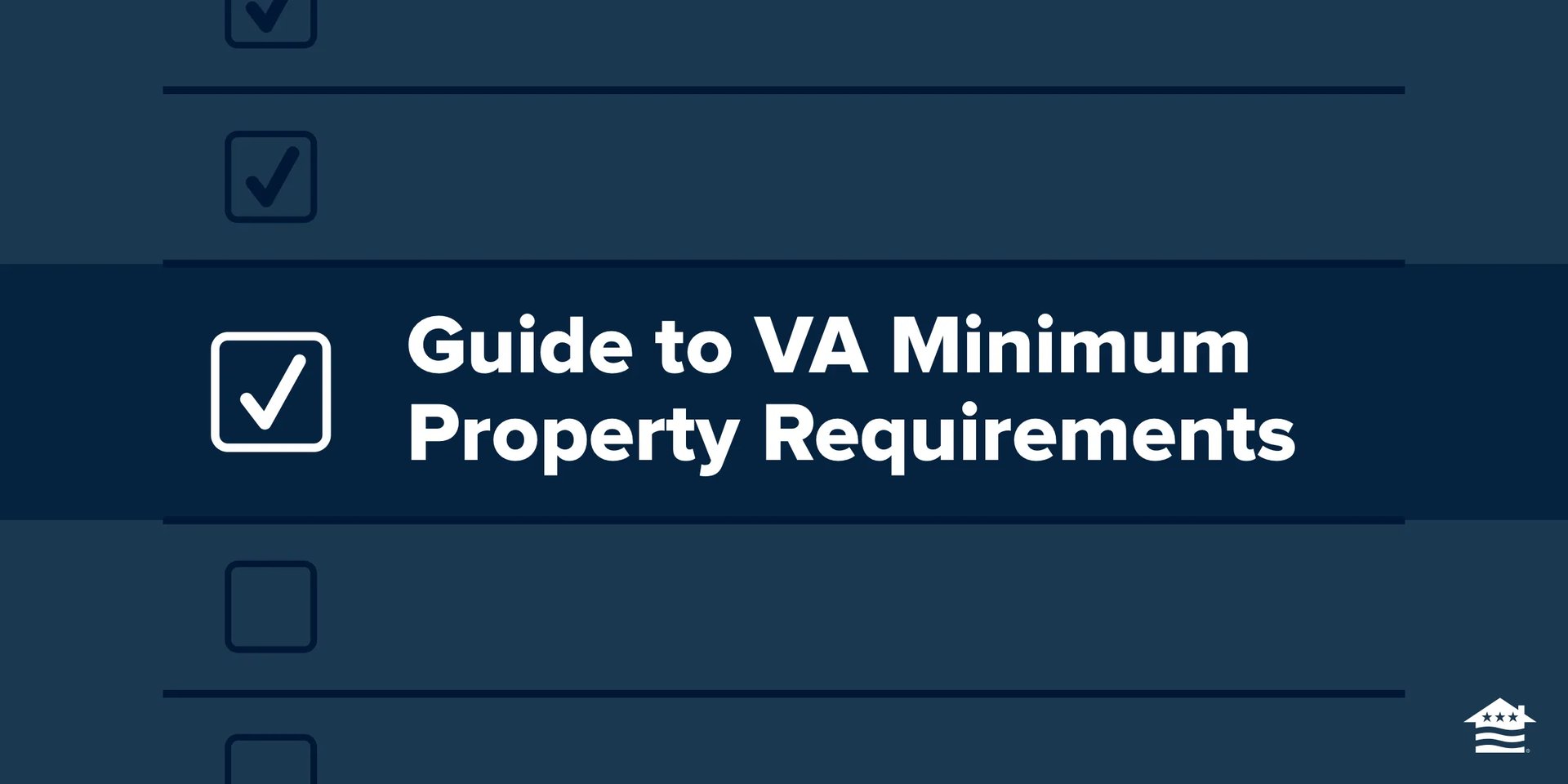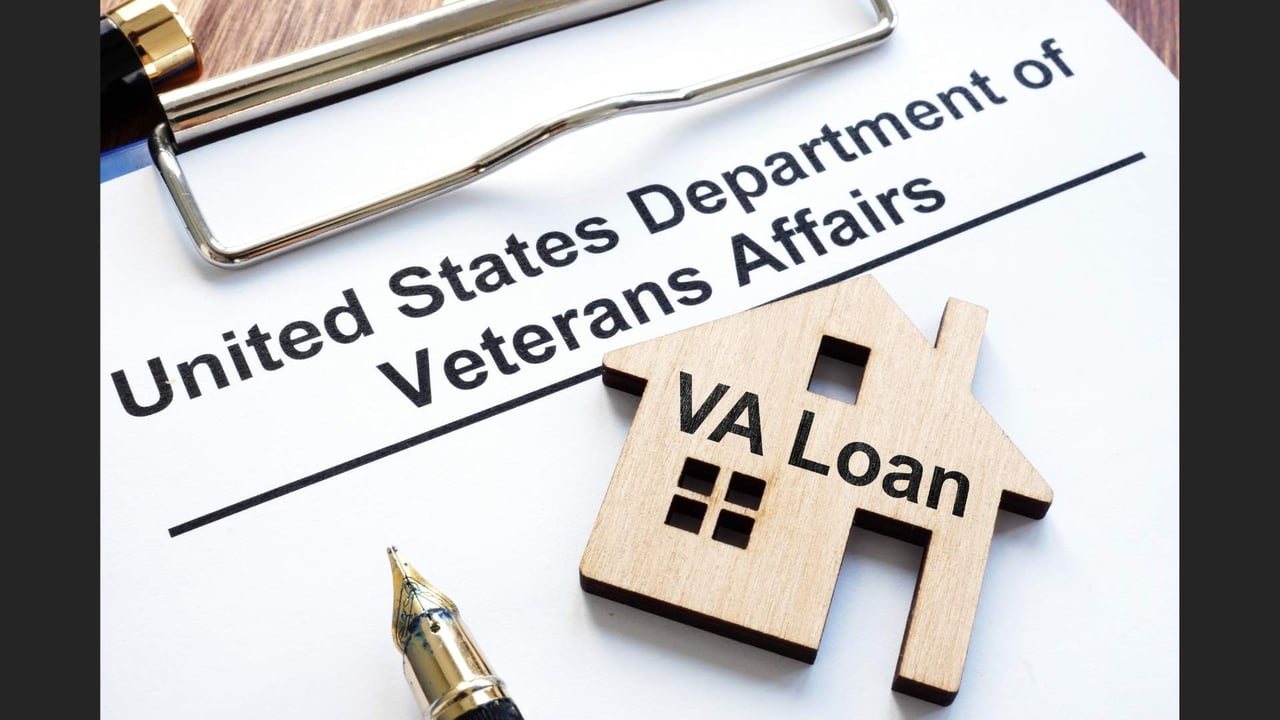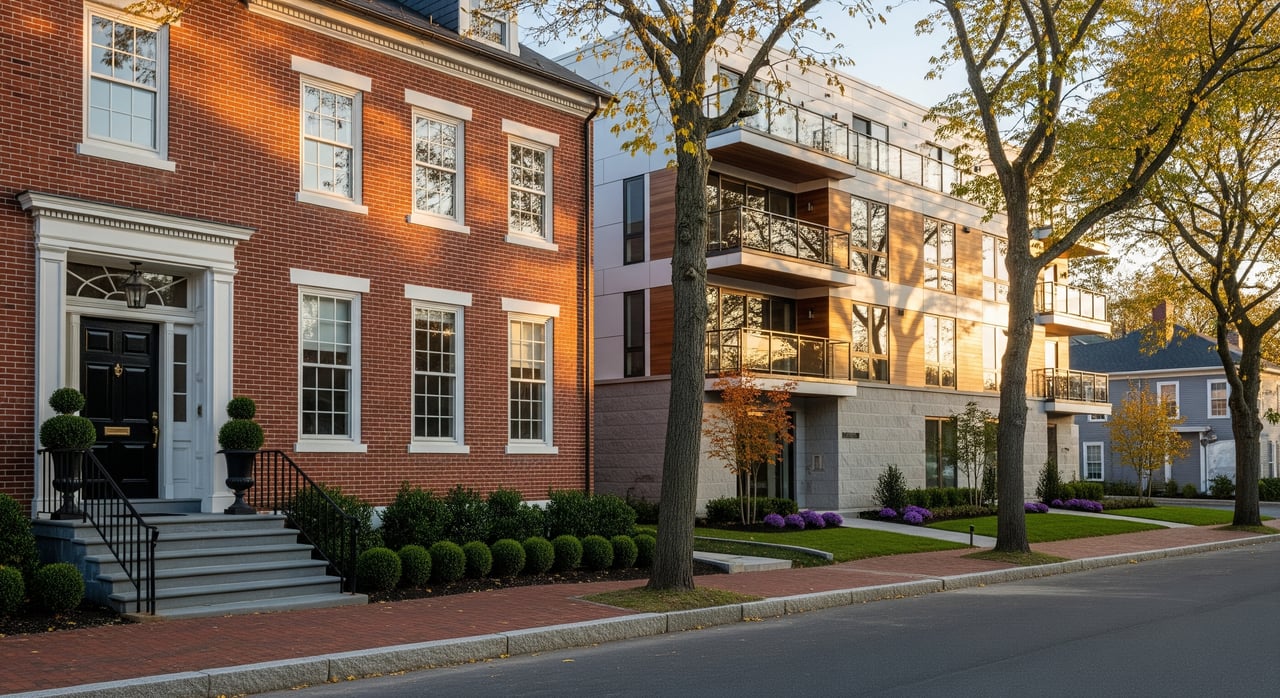The VA has a form of home requirements known as the Minimum Property Requirements (MPRs) to ensure the property is a safe and sound investment for the homebuyer. Below, we break down these requirements and how they differ from a traditional home inspection.

By Chris Birk
November 9, 2022

Within this Article
The Department of Veterans Affairs utilizes a series of Minimum Property Requirements (MPRs) that a home must meet to qualify for a VA loan. These property requirements help ensure that Veterans and military families have a safe, structurally sound, and sanitary place to call home.
Before approving the mortgage, your VA lender will request an appraisal performed by an independent VA appraiser who will determine if the property satisfies these basic home requirements.
VA Minimum Property Requirements at a Glance
- Working electric, heating, and cooling systems
- Adequate roofing that will last the foreseeable future
- Sufficient in size for basic living necessities
- Clean, continuous water supply with sanitary facilities
- Free of lead-based paint
- Free of wood destroying insects, fungus, and dry rot
- Safe and sanitary sewage disposal
- Accessible from an all-weather public or private street
- Attics and crawl spaces must be accessible and properly vented
Home Inspections and the VA Appraisal
The VA does not require homebuyers to get a home inspection. However, it’s typically a good idea as an added layer of protection.
Home inspections assess the overall structure (including the roof, HVAC system, foundation, and more) against local building codes to uncover potential issues the VA MPRs may miss.
Home inspection costs vary by location, home size, and property type. According to the U.S. Department of Housing and Urban Development, anywhere from $300 to $500 for a home inspection is typical.
Complete List of VA MPRs
A VA-assigned appraiser checks the property value and its compliance with the long list of VA loan appraisal requirements, which determines the property’s eligibility for a VA loan.
Once the origination appraisal is complete, the borrower will receive a Notice of Value (NOV) valid for six months, which will recommend that they proceed with a home inspection if desired.
Here is a complete list of VA loan appraisal requirements.
Marketable Real Estate
To meet VA MPRs, the property must be a residential dwelling (up to four units) that would appeal to most buyers. There is no upper limit for acreage, and it may include more than one parcel, although the appraisal must be prepared subject to placing them all on a single deed. The property may be divided by a road or a waterway as long as this situation does not impact its utility and marketability.
Space Requirements
Although the VA loan appraisal requirements do not set a limit, the property must be big enough for the occupants to use comfortably and include facilities for living, sleeping, cooking, dining, maintaining hygiene, etc. Unique homes are acceptable as long as they comply with local building codes and their construction does not affect their marketability.
Access
The property must be accessible safely year-round by foot or vehicle using a public or private road in all weather (dirt roads do not fulfill the VA loan appraisal requirements). If applicable, access to the private road must be protected by a recorded permanent easement or right-of-way.
Encroachments
The VA appraiser must report if any improvement, utility easement, or right-of-way encroaches on the property line, and the issue will need to be resolved before the VA loan is approved.
Drainage and Topography
For the property to satisfy the VA loan home requirements, the waste and surface water must flow off the house without ponding, and there should not be any risks of threats such as mudslides from adjoining properties, falling rocks, or avalanches.
Geological or Soil Instability, Subsidence, and Sinkholes
Although some settlement is to be expected, the VA appraiser should report any signs of potential instability that may affect the value or safety of the property, including cracks in the terrain, sinkholes, foundation damage, or settlement problems. In some cases, the appraisal may be made subject to repair by a licensed contractor (if there are foundation issues, for example.)
Special Flood Hazard Area
If the property is located in an area that floods regularly, either because it is located in a FEMA-designated Special Flood Hazard Area (SFHA), which requires a flood insurance policy, or based on the appraiser’s knowledge of the local market, it does not comply with VA loan home requirements.
Coastal Barrier Resource System
Properties located in Coastal Barrier Resources System (CBRS) areas near the Atlantic Ocean, the Great Lakes, the Gulf of Mexico, or the Caribbean Sea, which protect inland properties from storm surges, do not meet VA MPRs.
Non-Residential Use
VA loans are designed to purchase a residential property to be used as a primary residence. However, homes with a single accessory commercial dwelling may meet VA minimum property requirements as long as it is used primarily as a residence and the property complies with local zoning requirements. In addition, VA appraisers must not include the business unit’s value in their property valuation.
Zoning
The property must comply with all applicable zoning ordinances to meet VA loan appraisal requirements. “Legal Non-Conforming” properties (a.k.a. grandfathered properties) may comply with VA MPRs as long as the situation does not affect the value and marketability of the property. The appraiser must state whether or not the dwelling may be legally rebuilt if destroyed.
Local Housing and Planning Authority Code Enforcement
Sometimes, specific local housing/planning authority code requirements kick in once the property is sold. If the VA appraiser is aware of repairs that may be necessary to bring the property up to code before the transaction is complete (i.e., removal of unpermitted improvements), the appraisal must be made subject to these repairs.
Utilities
VA loan appraisal requirements are set to ensure that the property purchased with a VA loan is safe and move-in ready. All units on the property must have access to safe drinking water, sewer, gas, and electricity.
Water Supply and Sanitary Facilities
Similarly, all units must have a continuous supply of safe and potable water for drinking (including a central filtering system if necessary) and hot water for bathing, showering, and other sanitary uses. The property should also have appropriate sanitary facilities and a safe method of sewage disposal.
Individual Water Supply
Properties with individual water supplies may satisfy VA MPRs as long as the water source (whether it is supplied by a dug well, cisterns, or holding tank and sourced through springs, lakes, rivers, sand-point or artesian wells, a rainwater catchment system, or purchased and hauled on-site) is sufficient and safe for human consumption, using a filtration system or mechanical chlorinator if needed.





